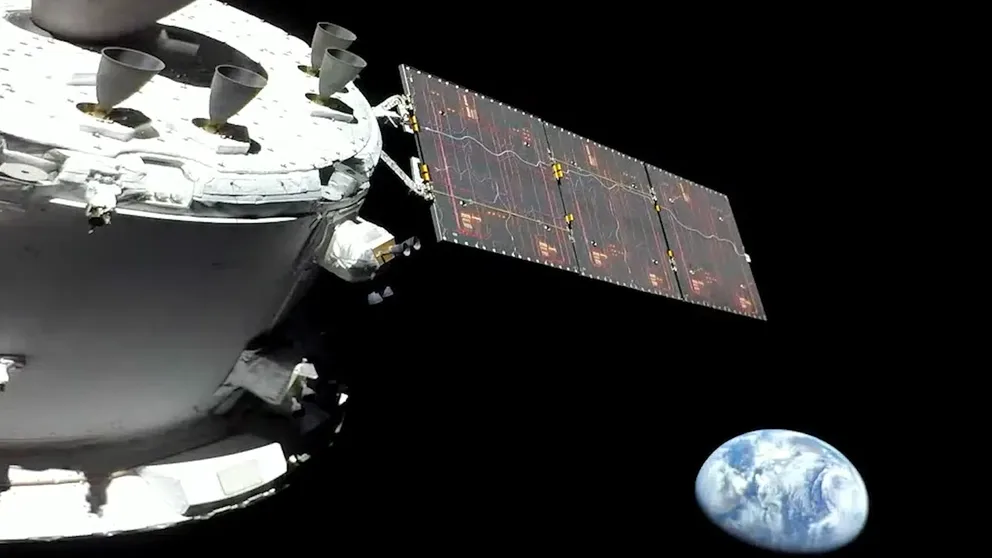Orion begins journey to the moon: What's next for NASA's Artemis 1 mission?
Orion is moving at more than 5,000 mph and its outbound journey to the moon will take several days. On Nov. 21, Orion will complete an outbound flyby power burn for its closest approach to the moon.
Artemis 1: First incredible images of Earth from Orion spacecraft and how to follow the mission
Only half a day into its journey, Orion is already sending back breathtaking views of our planet.
More than a day after launching from Kennedy Space Center, NASA's Orion spacecraft was nearly 200,000 miles away from Earth, sending back the first images of our home planet.
Orion launched Wednesday on the Space Launch System rocket at 1:47 a.m. Eastern, beginning its nearly 26-day test flight, known as the Artemis 1 mission, around the moon.
The spacecraft is already sending back the first breathtaking views of our planet using a series of cameras that act as the "eyes" of Orion.
A camera took the view below from Orion's solar array. Redwire Space Chief Engineer and Deep Space Systems founder Steve Bailey told FOX Weather earlier this year the solar arrays are like "big selfie sticks" for Orion.
The team has been using Orion’s exterior cameras to see how the vehicle is doing as it prepares for the first lunar outbound flyby.
"It's just a lot of fun for all of us that are operating the vehicle and checking it out, putting it through its paces," Orion Flight Director Jeff Radigan said.
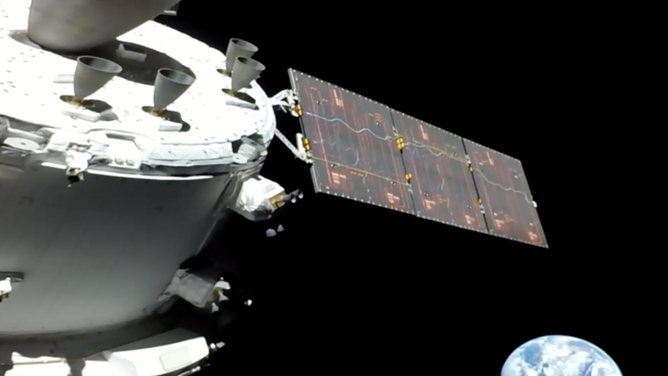
The view of Earth from NASA's Orion spacecraft from about 60,000 miles away as it begins the journey to the moon. (Image: NASA)
(NASA)
Meanwhile, another camera inside Orion showed the "moonikin" Campos in the commander's seat, wearing an Orion survival system suit. Campos is equipped with sensors that will help NASA gather data for future flights with astronauts.
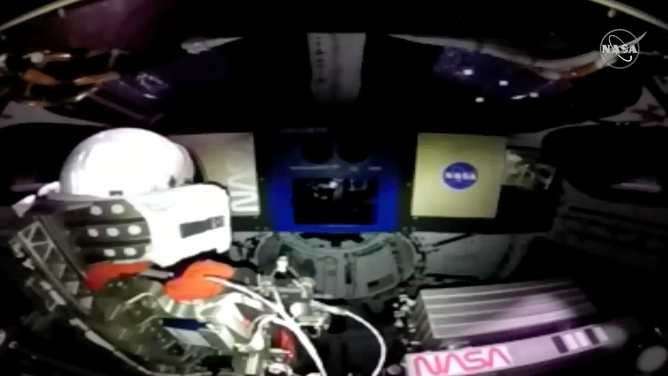
NASA's manikin named Campos seen inside the Orion spacecraft wearing the same suit NASA astronauts will wear on the journey to the moon. Orion launched on the SLS rocket at 1:47 a.m. on Nov. 16, 2022. (Image: NASA)
(NASA)
Since launch, Artemis I mission manager Mike Sarafin said the Orion team at NASA has been reviewing about a dozen "funnies" or potential issues with the spacecraft but nothing yet that would prevent the first lunar approach.
Overall, Orion is performing well in orbit, using less power and fuel than engineers expected, said Orion vehicle integration manager Jim Geffre on Friday.
"We're learning some things about the system that we didn't in ground testing. But again, the system performance has, in general, exceeded expectations and everything points to being able to accomplish the outbound powered flyby and continue the mission," Geffre said.
Mission timeline
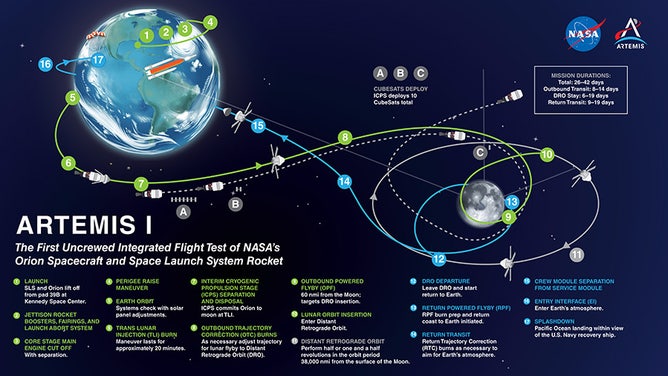
Artemis 1 mission timeline from launch to landing. (Image: NASA)
Early in the spaceflight to the moon, NASA's Orion team has been busy, and several mission milestones are coming up.
Propelled by the European service module, Orion is moving at more than 5,000 mph, and its outbound journey to the moon will take several days.
Engineers will use a series of engine thrusts to ensure the spacecraft is positioned toward its lunar destination. A trans-lunar injection burn happened about an hour after Orion launched from Kennedy Space Center, setting the spacecraft on its correct course toward the moon.
Orion brought along hitchhikers in the form of 10 tiny spacecraft that will be deployed at different points in the spaceflight to the moon. A total of 10 CubeSats will be deployed from Orion's stage adapter, a ring that attaches to the interim cryogenic propulsion stage (ICPS).
According to NASA, each tiny satellite designed by international, industry and university partners will gather data to help future moon missions and Mars exploration. The European Space Agency, Italian Space Agency (ASI) and Japanese Space Agency (JAXA) are among the international payloads flying with Orion.
Sarafin said all 10 CubeSats were deployed. However, only half of the small spacecraft were up and running as planned.
"The other half are working through a series of intermittent issues with either intermittent communications or just some of the CubeSats themselves are having difficulties," Sarafin said.
One of those, the LunaH-Map CubeSat from Arizona State University, showed a low battery charge state prior to deployment but Sarafin it’s "on a path to have a successful mission."
The shoebox-size LunaH-Map will map indicators of water ice on the lunar South Pole.
History made: A look back at NASA's Artemis 1 journey to launch
Early Wednesday morning, the Artemis I moon rocket successfully launched from the Kennedy Space Center.
Coming up on Monday, Nov. 21 is the outbound powered flyby burn which will propel Orion into the moon's sphere of influence.
The burn begins about 70 nautical miles from the moon at 7:43 a.m. Eastern and the closest approach to the moon happens around 8 a.m. Eastern. NASA plans to air live coverage of the mission milestone on NASA TV and online.
Orion will travel about 40,000 miles beyond the moon's far side, farther than any human-rated spacecraft. This lunar orbit is known as the distance retrograde orbit or DRO.
During some of this time, when Orion is on the far side of the moon, NASA won't have communication with the spacecraft.
Radigan said the blackout would last about 34 minutes.
"I'm sure we'll all be waiting as intently as we can, looking for the data to come back," he said.
NASA's Artemis 1 spacecraft will orbit the moon for about six days before beginning the trip back to Earth.
How to follow the Artemis 1 mission
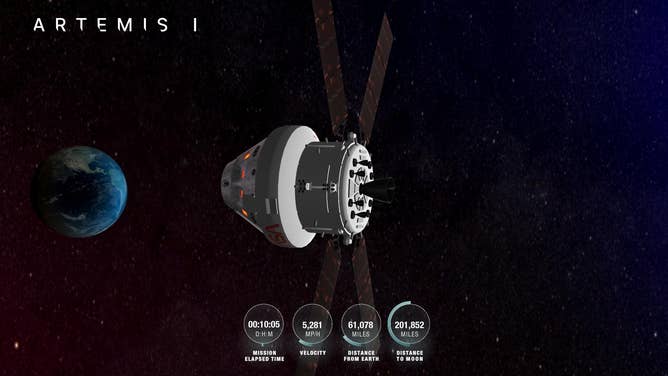
A screenshot of NASA's Orion tracking website showing the position of the spacecraft compared to Earth and the moon. (Image: NASA)
(NASA)
NASA launched a website tracking Orion's whereabouts that shows how fast it's traveling, the position of the spacecraft and the distance to the moon and Earth.
The space agency plans to regularly release video recaps and post daily updates on the agency's Artemis blog throughout the spaceflight.
NASA has several dedicated Twitter accounts providing updates on Orion and the Artemis 1 test flight, including NASA Orion and NASA Artemis. The NASA Moon Twitter handle will also share images and science information throughout the journey.
The Artemis 1 test flight will culminate after 25.5 days when Orion splashes down in the Pacific Ocean off the coast of California on Dec. 11.
